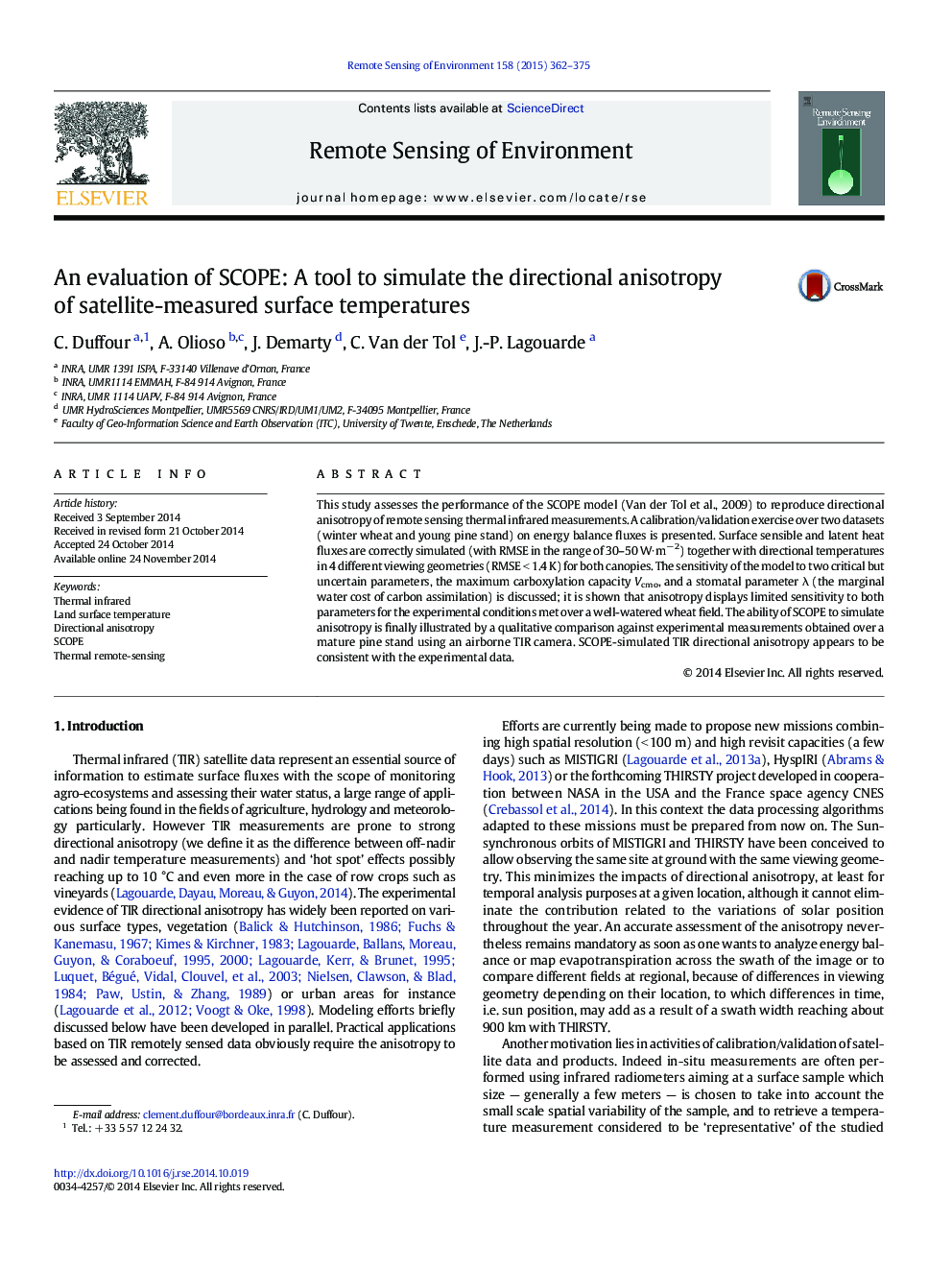| Article ID | Journal | Published Year | Pages | File Type |
|---|---|---|---|---|
| 6346263 | Remote Sensing of Environment | 2015 | 14 Pages |
â¢TIR satellite derived surface temperature is prone to directional anisotropy.â¢The SCOPE model is designed to simulate directional surface temperatures.â¢The SCOPE model is validated against field measurements.â¢The sensitivity of TIR simulated anisotropy to leaf biochemical parameters is studied.â¢SCOPE simulates hotspot and derives anisotropy in a large range of viewing directions.
This study assesses the performance of the SCOPE model (Van der Tol et al., 2009) to reproduce directional anisotropy of remote sensing thermal infrared measurements. A calibration/validation exercise over two datasets (winter wheat and young pine stand) on energy balance fluxes is presented. Surface sensible and latent heat fluxes are correctly simulated (with RMSE in the range of 30-50 Wâ m â 2) together with directional temperatures in 4 different viewing geometries (RMSE < 1.4 K) for both canopies. The sensitivity of the model to two critical but uncertain parameters, the maximum carboxylation capacity Vcmo, and a stomatal parameter λ (the marginal water cost of carbon assimilation) is discussed; it is shown that anisotropy displays limited sensitivity to both parameters for the experimental conditions met over a well-watered wheat field. The ability of SCOPE to simulate anisotropy is finally illustrated by a qualitative comparison against experimental measurements obtained over a mature pine stand using an airborne TIR camera. SCOPE-simulated TIR directional anisotropy appears to be consistent with the experimental data.
